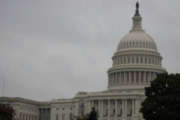When the government approved letting states experiment with new ways to deliver Medicaid services, it promised the innovations wouldn’t cost taxpayers any extra money. Somebody in the bureaucracy, however, failed to keep track.
A new report by the chief watchdog for Congress finds that the so-called demonstration projects have cost taxpayers as much as $32 billion more than if the program has just been left alone over the last five years.
The overages include $21 billion in overpayments by the Centers for Medicare and Medicaid Services (CMS) to individual states, and another $11 billion in extra spending by the states, the Government Accountability Office informed Congress this month.
Investigators said there were a range of problems that led to the excessive spending, such as the government using outdated information to set payment levels, or reimbursing states for expenses they never reported. The bad budget management has left Sen. Orrin Hatch of Utah, the top Republican on the Senate Finance Committee, incredulous.
“That CMS turned a blind eye to their own budget-neutral policies and instead committed to doling out another $21 billion in taxpayer dollars only further demonstrates the urgency for this agency to take action to get its fiscal house in order,” Hatch said. “American taxpayers deserve nothing less.”
For allowing one of the government’s largest spending programs to authorize billions in overpayments, the Health and Human Services Department and its CMS office win the Golden Hammer, a weekly distinction awarded by the Washington Guardian to examples of government waste and excessive spending.
HHS leaders disagree with the GAO’s evaluation, saying that budget neutrality is a policy, not a law, and that there are many different ways to calculate its effect.
In fact, agency officials accused GAO of using out-of-date information itself to conduct its investigation, including using a letter on budget neutrality policy from 2001.
The extra payments were “consistent with longstanding policy and was based on the most reasonable and documented cost assumptions available,” the agency argued.
But the GAO said HHS told its investigators the 2001 policy reflected current policies and practices. “The fiscal challenges facing the federal government require prudent stewardship of federal Medicaid resources,” GAO Health Care Director Katherine Iritani wrote in the report.
The demonstration projects are a growing part of the Medicaid budget, taking up about one-fifth of all spending in 2011, investigators said.
The largest overpayment GAO said, roughly $17.7 billion for the federal government, came from programs in Arizona, where HHS used 30-year-old data from 1982 to determine spending levels.
Meanwhile in Texas, the government allowed an extra $2.6 billion because it paid for hypothetical costs the state never incurred. Investigators said certain payment rates for Texas were set at what “the state could have paid rather than the actual amount of payments the state did make.”
HHS officials stood by their calculations, saying decisions were made based on accurate information, the future needs of the states and a fluctuating financial market.
The GAO also found spending improprieties for programs in Indiana and Rhode Island. Investigators evaluated six other states but found no wrongdoing.
HHS bases its payment rates in part from state reports. But investigators said the agency was allowing states to submit estimates for spending costs, rather than hard facts.
The definition of budget neutrality, the GAO said, is that “the federal government will spend no more under a state’s demonstration than it would have spent without the demonstration.”







